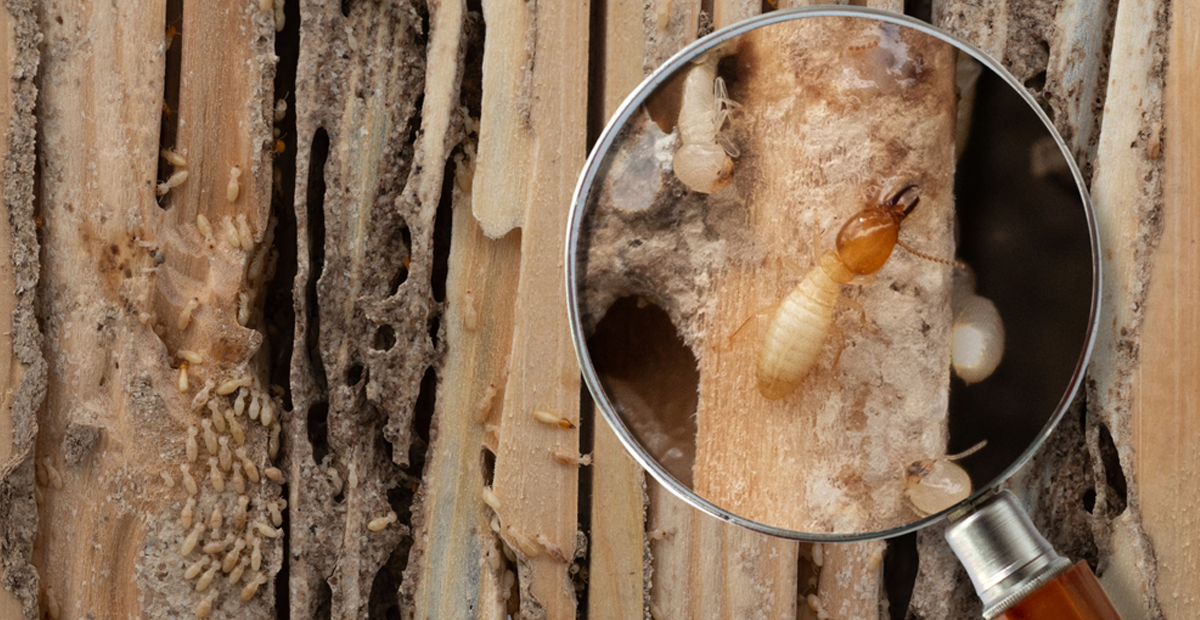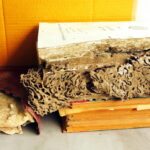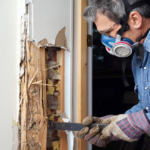Termites can cause significant problems for Melbourne residents. It can become a root cause of damage to properties each year. Many homeowners ask what are termites and how they can damage our property. This article will guide you more about termites, and its types that you may deal in your daily routine life. Let’s discuss in detail.

What Are Termites?
Termites are social insects and can be classified into the group of “Isoptera” to true ants to “Hymenoptera.” It can consist of 3000 termite species with almost 281 “Genera” and divided into 7 “families.” Termites have dark heads and bodies ranging from pale brown to white. It does not have a waist between the abdomen and thorax. The non-reproductive form of termites is blind, thin skin with no wings, which makes them unique for drying out. The reproductive form of termites has compound eyes, thick skin, and two pairs of equal sized wings that protect them from dying out when exposed.
They usually occur in tropical and subtropical regions with low rainfall and dry savanna climates. Its recommended to termite control at early stages, otherwise termites can cause significant problems for nurseries and young tree plantations. These pesky insects damage trees, crops, shrubs, and other plants due to being affected by disease, fire, drought, and other pests. Termites are primary consumers of cellulose and are most abundant in biomolecules on land. Based on research. Its feeding behaviors are classified into 4 main categories such as:
- Wood feeders can eat dry/live wood litter, usually in stagnant form.
- Soil Wood Feeders can usually eat highly decomposed wood at the soil interface.
- Grass/ Litter Feeders can love to eat grassy litter grass and dung.
- Soil Feeders can consume organic material and prefer to eat humified material with dirt.
Types of Termites
When people ask what are termites or what are the signs of termite infestations? They often do not realize about it because there are multiple species of termites. A few termite species are discussed below to help you.
Subterranean Termite
Subterranean termites can belong to the “Rhinotermitidae family.” It comprises “15 genera” over more than 300 species. They make their homes on your property and chew through wood to grow quickly. These species are notorious for causing serious damage to furniture and buildings. These pests have a big appetite and create a tunnel in the soil under your home to enter. These species can also create mud tubes from the soil in concrete through cracks and crevices in the foundation to reach the wood in your homes.
Drywood Termite (Cryptotermes SPP)
Drywood termites are usually found in coastal areas and are known for being widespread termites. They usually have pale brown but can change from light yellowish tan to dark brown. Adult dry wood termites have short legs and thick and oval-shaped bodies, with winged ones being gray. These species can live in doors, windows, and furniture. They can not attract to the soil. It is challenging to spot damage from these termites as the signs only appear as the structure collapses.
Giant Termite (Mastotermes Darwiniensis)
Giant termites can be found in the tropics of the Capricorn region in Melbourne. Particularly, they can be difficult to find during rainy seasons. It is one of the most dangerous types of termites that can become a root cause of damaging your property, trees, and shrubs. These species usually nest in trees, but female termites often leave their colonies to establish new ones. It is essential to deal with all pest problems to find effective solutions.
Dampwood Termite (Porotermes Adamson)
Dampwood termites belong to the ” Termopsidae ” family and are also called “wood rotten” termites. These insects can be creamy white to brownish. It has a long, narrow, oval-shaped body with six legs. They are often found in homes, wooden fences, weatherboards, etc. These species like decaying wood and dampness in the forest. They are bigger than other termites and usually have small colonies that can grow faster if the conditions are right.
Ring Ant Termite (Neotermes Insularis)
Neotermes insularis also, known as ring ant termites, usually live in forests but can also be found in garden trees. They can grow up to 10-15 mm in length. They have a flat head with a part behind their chest that is as wide as their head. It can build its nest on the outer edge of the trees. These species have many communities and are commonly found in coastal areas of Melbourne.
Termites Life Cycle
To fully grasp what are termites, you must understand the life cycle of termites from egg to adult. They have three main stages of growth. It begins with an egg and then turns into a young termite. These young termites can take place in colonies, which includes reproductive swammers.
A queen termite produces almost 20,000 – 30,000 eggs per day and is called nymphs. An egg plays a vital role in developing termites’ caste and ensuring their ongoing growth. It doesn’t take care of themselves; a worker termite feeds them. The termite nymphs are white or a very pale shade of tan in color. It takes 3 – 4 months before developing into an adult. Some nymphs will develop new reproductives such as queen or king. The main role of nymphs is the maintenance of nesting. Its development can be affected by the environment, food resources, predator threats, and pheromones from the queen.
Termite Living
- Adult termites in a colony fulfill their various roles based on their castes:
- Workers can easily construct and maintain the nesting, gather the food, and are responsible for taking care of their young ones.
- Soldiers have strong jaws that can protect their colonies from predators.
- Reproductives or alates can mate and produce new generations.
Swarming usually occurs in the summer or spring seasons. When mature colonies release winged termites, reproductive swarming can happen, and new colonies can be started. This event is triggered by environmental factors like warm temperatures and high humidity, often after rain. The main role of alates is to leave the colony to find mates and make new colonies to expand the termite population.
Conclusion
Everyone must understand ‘’what are termites’’ and Protecting your residential or commercial buildings from these pesky insects is crucial. Knowing about termites, their types, and their life cycle, you can better identify and manage the infestations before they cause serious damage to your property and homes. Regular inspection and taking preventative measures by a professional is a key to maintaining a termite-free environment. If you suspect any pest at your place, don’t hesitate to call Zap It Pest Control Melbourne to provide effective, reliable, and long-lasting solutions.


